Background
Fast, reliable, secure data access is crucial to the foundation of any business’s delivery of products and service. There arrives a time where small businesses grow and expand to the point where all computers require access to and store information in the same centralized repository. A NAS is the best option as it goes beyond “just being a storage”; the question remains: there are so many NAS’s on the market, so which one should I choose?
What may be the qualities of a suitable NAS? Though we cannot conclude which one may be the best OS, we compare these operating systems (using the NAS models selected from the market Windows-based “D Brand” and preconfigured, Linux-based “Q Brand”) through several aspects such as pricing, system requirements, and additional features to determine which may be the best fit for SMB deployment.
Pricing
The difference in pricing in choosing between Windows and Linux matters.
Using 2U NAS, with 12*2TB SATA HDD as raw capacity and 4*onboard 1G GbE as the standard, we compared the list prices of D Brand vs Q Brand, with D Brand pricing their NAS at $7177 while Q Brand was priced at $5899 for system alone for a total solution making the difference a stark 22%.
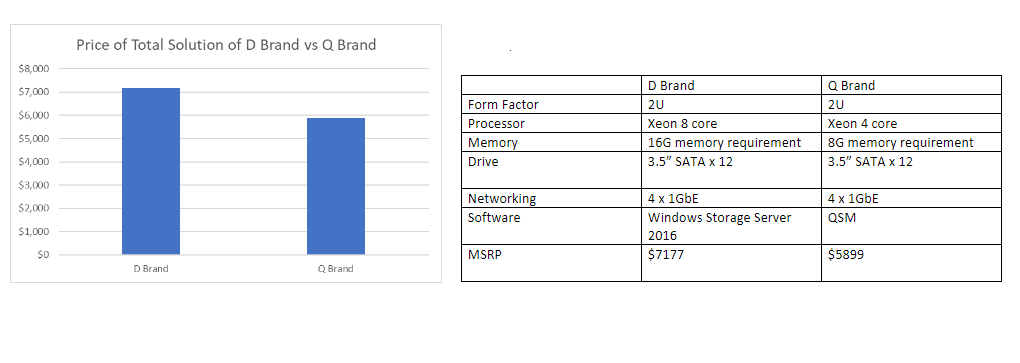
Let’s analyze where this difference comes from: first off, let’s review the difference between Linux and Windows architectures. Linux’s is more efficient and lightweight in comparison.
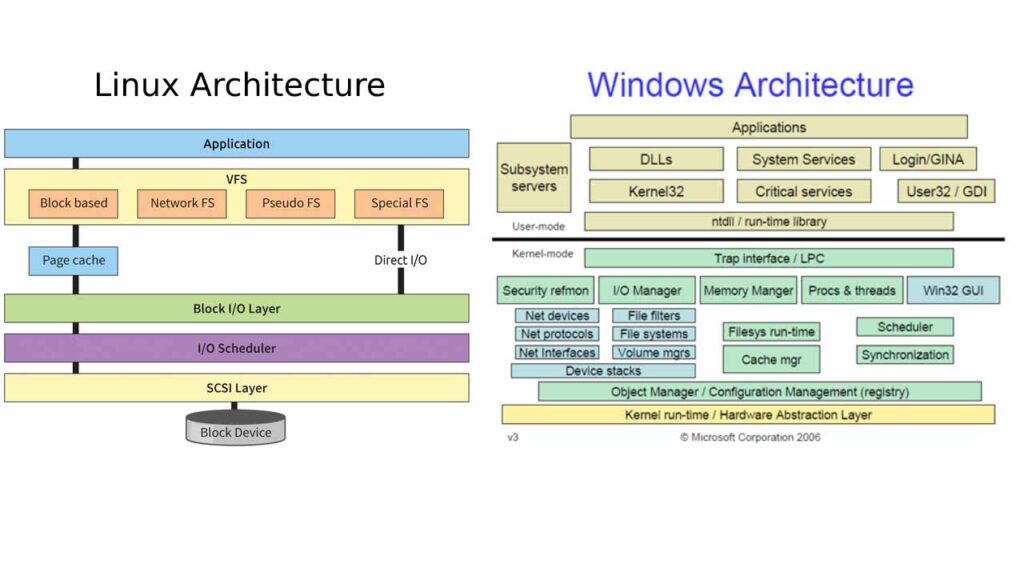
Storage Efficiency
From the brands selected above, Windows utilizes a thicker software stack which causes the gap in resource utilization between Linux and Windows, as Windows uses more hardware resources to run which also affects future performance. Linux Embedded System overall is more lightweight, with the OS in the system itself capable of being installed on a 512MB flash DOM.
Windows installation requires 600GB of space (two dedicated hard disks which cost around $600) to store its OS.
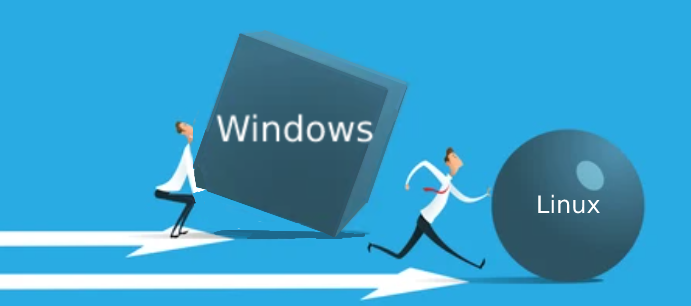
Computing Resource Requirements
Linux also uses a smaller footprint, so users can enjoy the benefit of fast hardware for longer on Linux than on Windows.
On the other hand, Windows automatically runs a handful of background apps which further consumes resources.
At the same speed or more, Linux consumes less resources.
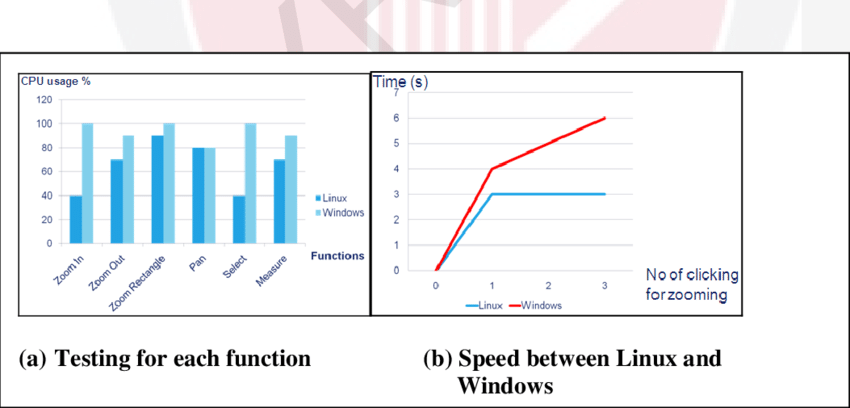
Source: (Source: https://www.researchgate.net/figure/shows-the-Linux-and-Windows-performance-between-each-activity-namely-zoom-in-zoom-out_fig16_302578318/download)
From the models selected above of D Brand and Q Brand, we compare the specs: the core required for each model, respectively, is Xeon 8 core and Xeon 4 core, while memory required is 16G vs 8G. This is consistent with our reasoning that Windows systems requires a Processor/ memory of a higher scale in order to run, while Linux built NAS does not need high spec support.
Native RAID Support
Contributing to a price gap would be RAID: RAID is a fundamental technology of data protection, but Windows based NAS needs additional module for solid protection (hardware raid card), with the exception of systems that already have native RAID support integrated.
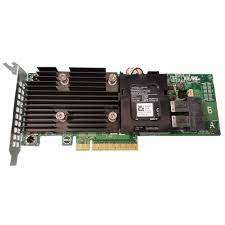
Since Windows RAID support is not native and not as developed as Linux’s is, Windows needs an add on RAID card module to support RAID and provide more solid protection. From the models selected (D Brand and Q Brand) an additional hardware raid model costs an additional ~$900.
OS Licensing
Windows licensing also incurs costs from Microsoft while Linux-based programs are almost always developed in-house. Depending on the vendor, OS Licensing could cost up to thousands of dollars.
Bonus Linux Exclusive Features
Most Linux based NAS has technology that Windows lacks which ensure the integrity and safety of your data files, such as: compression, thin provisioning, SSD caching, Multi NAS sync, and multi-layer security, including WORM, SED (Self-Encrypted Drives), Protection, and Pool Encryption, are exclusive to Linux.
Other than these advantages, Linux NAS provides additional features that are not built-in by default in Windows through add-on, such as VPN Server, SQL Server, Web Server, PC Backup, Cloud Backup, Cloud Sync. These features offer NAS to be more than a storage, but extended versatility for it to be used as an all-in-one model. An example would be using a NAS as Web Server for GoDaddy or website building and Hypervisor Manager Support.
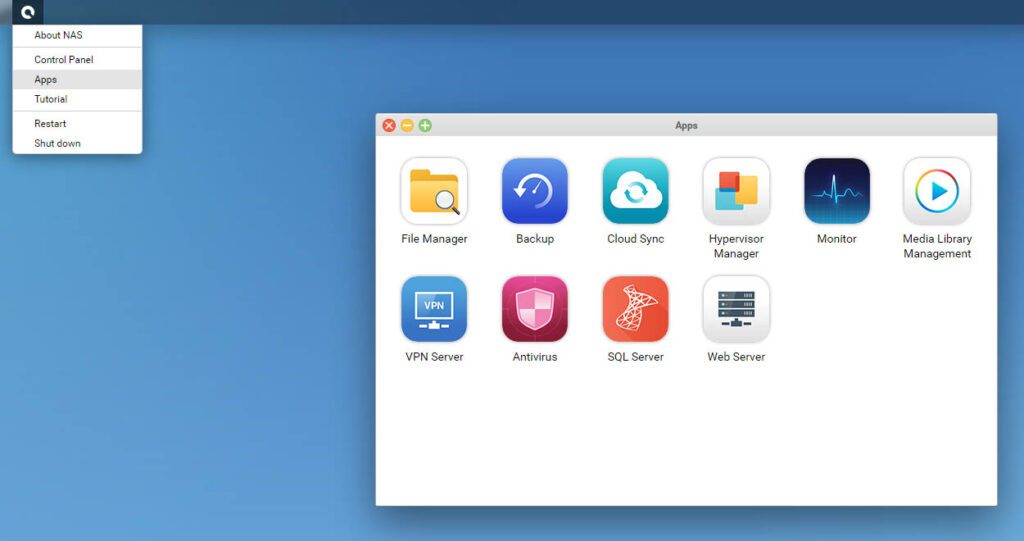
Manageability
Another important factor in manageability is admin accessibility; a fully-tested, preconfigured Linux-based NAS’s easy GUI is more manageable for small companies that are more budget sensitive and lack IT staff. A turn-key solution rids of the hassle setting up, and Linux’s step by step directory assists users with no prior IT knowledge to set up procedures by themselves with ease.
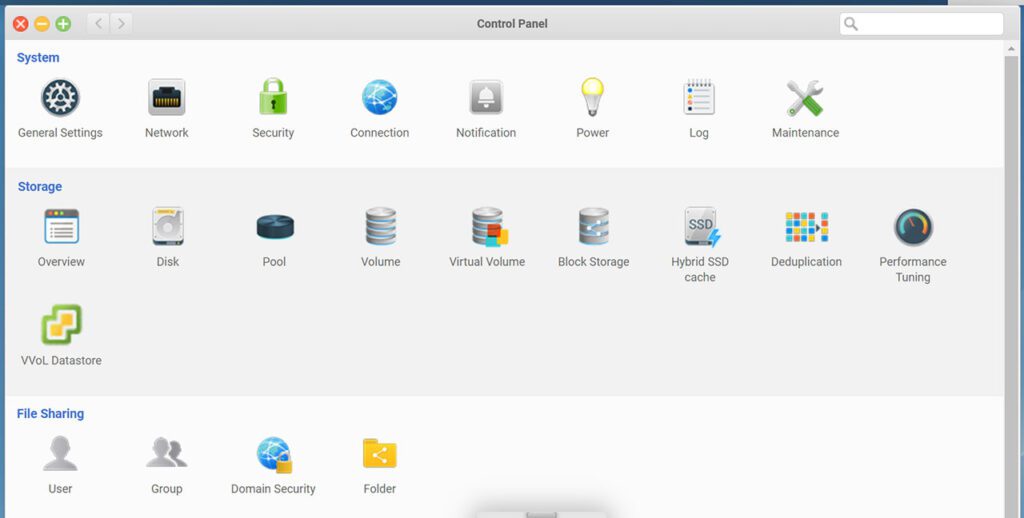
In Windows, the management and configuration of a server take experienced IT staff or knowledge, which incurs extra fees for employee learning or outsourcing.
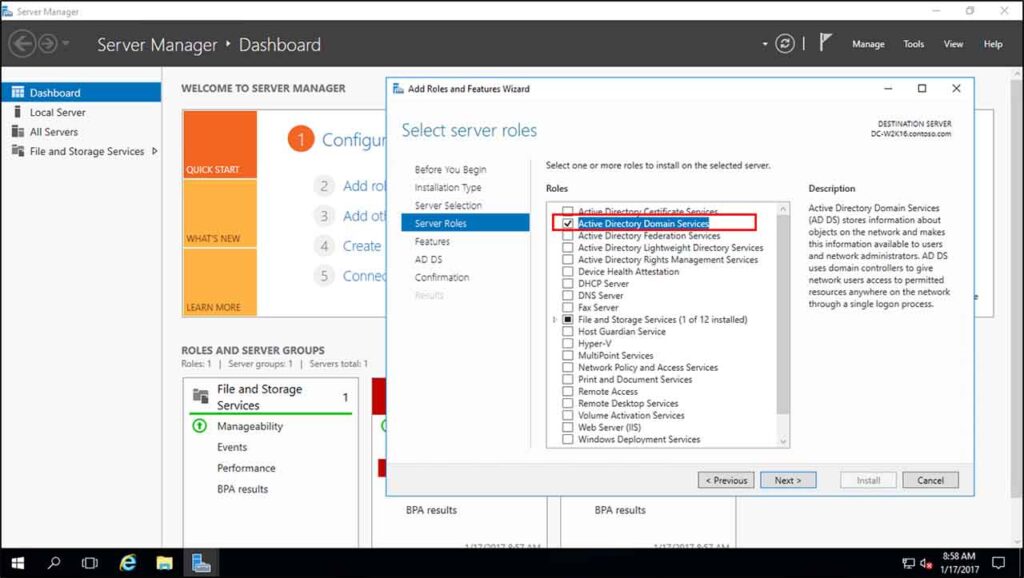
Conclusion
| Pre-Configured Linux | Windows | |
|---|---|---|
| Pricing · Storage Efficiency · Computing Resource · Native RAID · OS Licensing | Low · High · Low · Inbuilt · Free | High · Low · High · RAID card support needed · Additional purchase from Microsoft |
| Additional Features | Versatile | Limited |
| Manageability | Easy deployment and management for everyone. No prior IT knowhow | Specialized IT support and knowhow |
We dissected pricing, additional features, and manageability to pinpoint what SMB would need based on available resources, challenges, background, and goals. Our conclusion is as follows: while comparing subcategories in pricing, we found that Linux-based NAS possessed swifter storage efficiency that that of Windows, taking up little computing resources when it was deployed in comparison. As for RAID protection, Linux offers in-built Native RAID, while Windows RAID card support is needed due to lack of thorough RAID support. Add OS Licensing on top of that: Linux is completely free while Windows-based NAS requires additional purchasing from Microsoft.
Not to mention that Linux offers a range of additional features for versatile deployment to shape their NAS into a multi-use server. Manageability wise, Windows requires specialized IT support knowhow for configuration, while Linux offers a step-by-step walkthrough on configuration to save on the hassle of management.
The most suitable OS for SMB segments for NAS would be pre-configured Linux due to its file sharing and flexible capacity expansion capabilities. While Windows still has its advantages such as large-scale deployment and integration into Windows-based environments, SMB should consider Linux as its primary solution based on what SMB should prioritize: affordability, versatility, and manageability.



